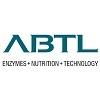Explore all the information on
Poultry gut health
The efficient conversion of feed into its basic components for optimal nutrient absorption is vital for both broiler and broiler breeder production and welfare. Gut health, an intricate and complex area combining nutrition, microbiology, immunology and physiology, has a key role to play. When gut health is compromised, digestion and nutrient absorption are affected which, in turn, can have a detrimental effect on feed conversion leading to economic loss and a greater susceptibility to disease. In addition, recent changes in legislation on the use of antimicrobials, differing feed requirements and more efficient birds highlight the need for a better understanding of gut function and gut health.
Despite extensive research on reduced protein (RP) diets in broiler chickens, the consequences of such practices for gut health and barrier function are not well defined. This study was conducted to investigate the effect of reduced protein and the source of protein. The control normal protein level diets had either meat and bone meal (MBM) or an all-vegetable diet (VEG). Accordingly, four diets were formulated; 1) VEG standard protein, 2) standard protein containing MBM, 3) RP (17.5% in...
Comments : 0
Recommendations: 0
I. Introduction Necrotic enteritis (NE), caused by Clostridium perfringens (CP) and exacerbated when birds are co-infected with Eimeria spp., is one of the most severe and common diseases resulting from intestinal mucosal damage (Bae et al., 2021). The stimbiotic (STB) concept has been recently introduced as a non-digestible and fermentable additive that stimulates the development of a microbiome comprising bacterial species that are principally involved in fibre...
Comments : 0
Recommendations: 0
I. Introduction Glycans are polysaccharides, essential biomolecules with well-established benefits for the host and abundantly used as prebiotics to support balanced microbiome function. Host produced glycans, such as mucins, are crucial for the defensive purpose of the intestinal epithelial barrier against pathogens (Coker et al., 2021). Glycans are often projecting on the cell surface and are frequently secreted molecules, thus presenting a perfect pathogen trap or...
Comments : 0
Recommendations: 0
Introduction The poultry industry is one of the most dynamic industries in world of agri-business, and feed is the backbone of this industry. But, with rising feed ingredients cost, making a good quality feed at low price has become a challenge for the poultry industry. To minimize the impact of rising prices of conventional feed ingredients, the other option is the use of unconventional raw materials. Many of these products contain high levels of plant cell wall...
Comments : 2
Recommendations: 2
...
Comments : 3
Recommendations: 0
Patented solid-state fermented Surfactin from Bacillus sp.Antibiotics-free and patented Feed additives...
Comments : 0
Recommendations: 0
Last week, NOVUS representatives presented the 2023 Novus Outstanding Teaching Award to Elizabeth Karcher, Ph.D., of Purdue University during the 2023 Poultry Science Association (PSA) Annual meeting in Philadelphia, Pennsylvania.
As the leader in intelligent nutrition for the animal agriculture industry, NOVUS has been a...
Comments : 0
Recommendations: 0
The Evonik Corporation award is an annual award given as an achievement award, i.e., for distinctive contributions to poultry science advancement, covering a period of not more than seven years preceding the annual award.
Joshua (Jianhua) Gong
Agriculture...
Comments : 0
Recommendations: 0
Is it possible to achieve gut health without using antibiotics? Dr. Steve Leeson (University of Guelph, Canada) responds to this question
...
Comments : 1
Recommendations: 2
To be sustainable, livestock sector growth needs to simultaneously address key environmental, social, and economic challenges. Hear what Dr. Shivi Maini, General Manager Technical, Indian Herbs Specialties, has to say about it...
Comments : 2
Recommendations: 2
This award recognizes distinctive, outstanding contributions by an industry leader or leaders based upon a broad, even nonscientific, contribution to the poultry industry.
Steven C. Ricke
Meat Science and Animal Biologics Discovery...
Comments : 0
Recommendations: 2
Introduction The application of exogenous enzymes in fibrous diets has been found to increase nutrient utilization and subsequently improve the growth performance of broilers [1, 2]. However, the response of different enzymes is not consistent, and it could vary based on the types of ingredients present in the diet. Among the exogenous enzymes, xylanase is commonly used to improve nonstarch polysaccharide (NSP) degradation in wheat-based diets, but it is also increasingly being used...
Comments : 0
Recommendations: 1
Introduction Poultry productivity depends on the combined effects of several factors such as the level of nutrients in feed, proper management practices, and the health status of the birds. To keep the enteric infections under control and promote growth, the supplementation of antibiotics in the poultry feed has been a regular practice. However, the use of antibiotic growth promoters (AGP) is restricted or banned in several countries due to the public health concern of...
Comments : 0
Recommendations: 0
Aaron Cowieson (DSM) discusses microbiome research in poultry nutrition and the feed additives considered, during this Engormix interview....
Comments : 1
Recommendations: 3


Feed Granulometry and the Importance of Feed Particle Size in Layers
Suggested link
1. Introduction The small intestine is a highly differentiated and complex organ with many nutritional, physiological, and immunological functions [1–8]. First, the small intestine is responsible for the terminal digestion and absorption of dietary nutrients and is, therefore, essential to health, growth, development, reproduction, and sustaining life in organisms. Second, the neonatal small intestine can absorb immunoglobulins from milk before gut closure, which is...
Comments : 0
Recommendations: 0
...
Comments : 1
Recommendations: 0
Two experiments evaluated the addition of an exogenous sfericase protease in broiler diets. Experiments were run (Exp1 and Exp2) with 1,848 and 2,100 one-day old male chicks being allocated into 84 floor pens with 14 replicates of 22 and 25 birds each, respectively. The studies were conducted in completely randomized designs. In Exp1, Standard diets were formulated with energy and AA at marginally lower levels than usual by the Brazilian integration such that broilers were expected to grow...
Comments : 0
Recommendations: 0
Introduction Modern broiler chickens are most certainly a most visible manifestation of genetic advancements. At hatch, a Cobb500 broiler weighs 42 grams. This newborn chick grows 31 % (55 g/bird) in just twenty-four hours. By day 35 of age, this chicken reaches a body weightof 2,521 grams, representing 5,902 % relative to hatching mass (Cobb-Vantres 500, 2022). Genetic selection, food, health, and management measures carried out intensively have resulted in these successes....
Comments : 0
Recommendations: 5
Following the success of the Research Topic “Alternatives to Antimicrobial Growth Promoters and Their Impact in Gut Microbiota, Health, and Disease: Volume II,” we received an invitation from Frontiers to work on Volume II. This second volume includes 31 scientific articles, in the text of individual chapters in this Frontiers Research Topic. The editors are grateful to all 197 authors that contributed and participated in the achievement of Volume II. Homo sapiens reached...
Comments : 0
Recommendations: 0

.jpg&w=3840&q=75)







.jpg&w=3840&q=75)























